
41 minute read
CHAPTER THREE
Movements, Coalitions and NGO Platforms Together:
flexible webs and fluid spaces
Advertisement
We have seen the crises in which civil society organisations work and their unique and diverse roles as collaborating actors, whether they are leading, catalysing or supporting social change…
Let’s take a look at some in-depth experiences of the challenges, tensions, dilemmas and possibilities that they face.
The story of a social movement ally: The Brazilian Association of Non-Governmental Organisations (Abong)
By Iara Pietricovsky, Co-director (Abong) and Forus Chair
The Brazilian Association of Non-Governmental Organisations (Abong) has played a significant role and continues to do so in Brazil. In 1970s, the time of the military dictatorship, a powerful new impulse emerged of civil society organisations, becoming key actors influencing the future political landscape in the country. Social movements started to surface alongside NGOs, supported by more progressive factions within the Church, known as Ecclesial Base Communities, where the processes of political awareness, inspired and fermented by Liberation Theology, fed all the movements promoting the re-democratisation process. The NGOs were launched mainly by people returning from exile. Instead of the usual route they stayed independent from political parties and trade unions. There were more than 5000 different groups busy re-establishing connections with the people on the ground, planting the seeds of social movements to come. The way that they could operate legally was as non-profit associations. The churches were places where radical intellectuals connected with these movements, promoting ideas and connections around the country, building a resistance and a common agenda. Initially this was focused on issues such as agrarian reform and democratisation, infused with a generic idea of human rights. During the early 1980s, the Landless Workers Movement, (Movimento dos Trabalhadores Rurais Sem Terra (MST) became the first significant social movement in Brazil. The Unified Workers’ Central (Central Única dos Trabalhadores (CUT) and the Workers’ Party (Partido dos Trabalhadores (PT)) were also established in this period. They were not yet strong on women’s rights and particularly not on issues of black women and anti-racism. At the beginning of Brazil’s democratisation process, birthed by the adoption of the new constitution in 1988, the civil society sector in Brazil was being significantly shaped by the social movements.
However, at this point there were thousands of organisations operating in the country, legally defined as non-profits and many of them linked to political parties, special interests and Although part of our work is to defend the interests of our members this is not our driving the church, doing many different things, but only some with a progressive agenda. Those of us working in such organisations identified a strong need to define ourselves clearly as independent purpose. It is only a means to an NGOs. We needed to find a way to distinguish our end, to strengthen our collective capacity to support social movements. values and practice from the rest and to frame that difference clearly. We did this by starting an association in the early 1990s. That was the beginning of Abong, the NGO platform in Brazil. Our platform defined itself through a commitment to support those movements in their struggles: pro-equality, prodemocracy, human rights and social transformation. These were the fundamental objectives which gave rise to this impulse. We pledged to cooperate with each other, including finding strategies to access public finance in Brazil in solidarity with the social movements. So, Abong was founded with the purpose of coordinating our actions within civil society. We now have about two hundred and fifty members all over the country, differing in size and thematic areas and acting at various levels in society. Many of our members see their core work as supporting the social movements and acting as advisors. This has historically shaped what we are and still defines our core mission in Abong as the leading NGO platform operating in contemporary Brazil.
THE VALUE NGOS AND ABONG BRING TO SOCIAL MOVEMENT STRUGGLES
Although part of our work is to defend the interests of our members this is not our driving purpose. It is only a means to an end, to strengthen our collective capacity to support social movements. One of Abong’s key contributions is serving as an “institutional bridge” between social movements, the state and the public. For example, in Bahia, Abong was at the centre of a dialogue to develop a law to advance the rights of disabled people, organising the engagement between the disability movements and state institutions, leading to the approval of policy “legislation”. Another example was the lobbying for a National Cultural law called Cultural Points with Abong central in the debate. The policy we now have ensures government financial support for all kinds of cultural initiatives across the country.
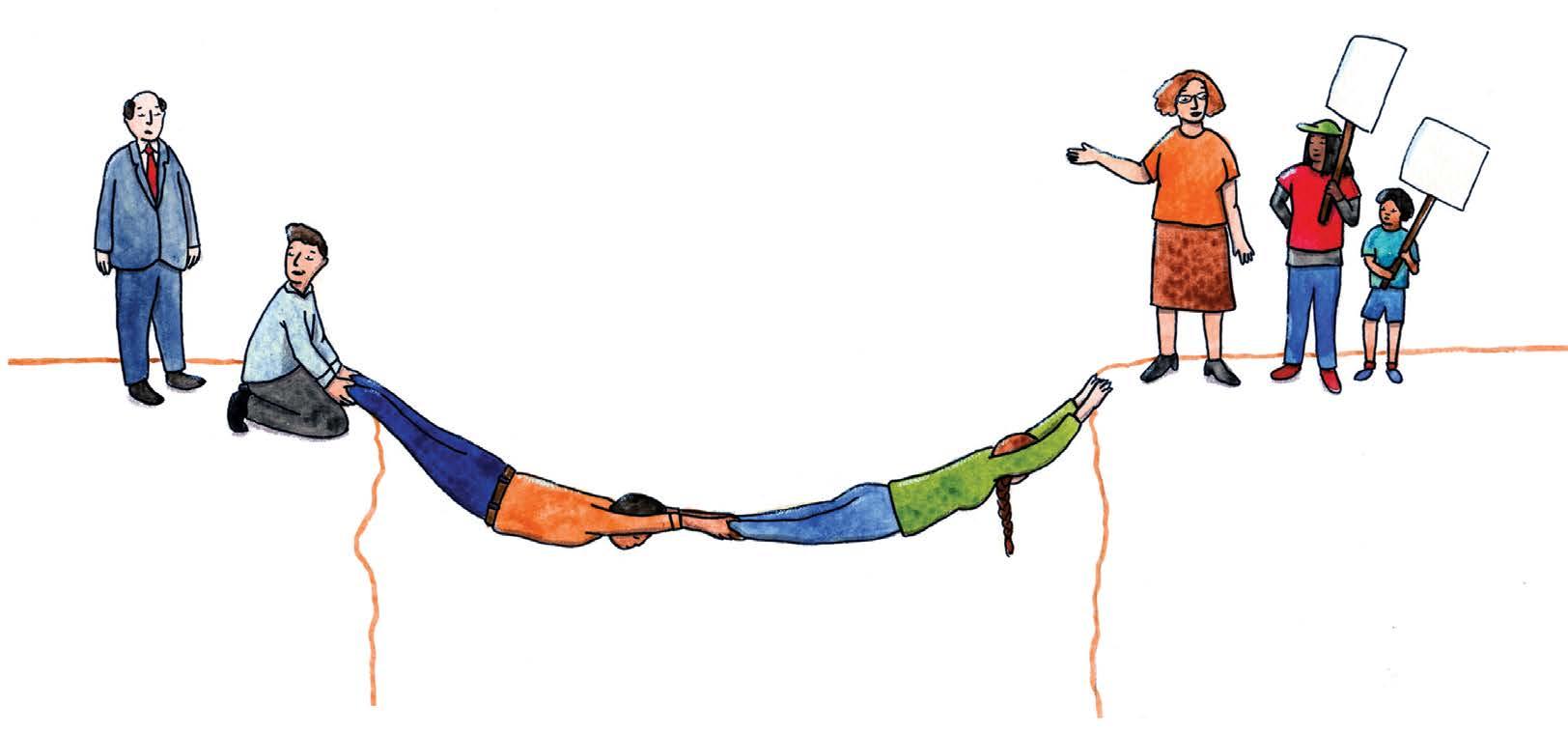
We have worked together in solidarity with other cultural, women’s and youth movements. In the runup to the recent Brazilian elections Abong worked closely with the Black Women’s Movement. This is made easy because among our members we have strong feminist organisations who are well connected on the ground. We started a campaign of dissemination to raise awareness and the debate about structural racism in Brazil and encourage the population to vote for black women candidates. Our desire as Abong is to work together with movements. We share an interest to engage in a respectful and reciprocal relationship which gives us a sense of legitimacy in these struggles. Therefore, we confidently add our voices in campaigns supporting black women and we are able to do this without being a movement ourselves. There is also undeniable and pervasive racism at many levels, and we see it as part of our struggle to change this situation. We also reflect on our own attitudes and behaviours when it comes to gender and race issues. This is especially important because our It took almost a decade of NGOs are themselves reflections of the same challenges within debating and struggling Brazilian society because there is racism and discrimination in our own organisations, and we have to work on raising among ourselves and awareness about the structural nature of the problem, so deeply with social movements to embedded in our society. achieve this clarity.
FINDING SOME CLARITY OF ROLE
Right now, there is a better clarity about how we are different to social movements. They are not institutionalised and therefore have no obligation to any legislative framework. This keeps open their space in taking positions and putting pressure on government, using a wide range of strategies, unconstrained by those frameworks. On the other hand, as formalised organisations, we operate partly inside “the system” and can work it to the advantage of progressive causes, and that is the difference. It took almost a decade of debating and struggling among ourselves and with social movements to achieve this clarity. In recent years, with the rise to power of an anti-democratic far-right, Abong’s struggle has also become a tool for maintaining the democratic advances of the past 30 years. While Brazilian civil society organisations have been attacked physically, financially, and bureaucratically, criminalised and stifled in their perspectives of participation and grassroots action, Abong positions itself as a support and diffusion entity, acting both internally and internationally to vocalise, denounce and create conditions for a healthy civic space in Brazil.

Although Abong enjoys a sense of legitimacy with the social movements this was not always easy. In fact, the question of legitimacy is a permanent tension between NGOs and social movements who struggle for social transformation. We have had many debates with the movements about who has the right to talk on behalf of what issues and when. I have a personal example of this, having worked all my life with indigenous people in Amazon in the centre of Brazil. I often used to hear, “you are not indigenous, you cannot talk on behalf of them.” I said, “No, I can speak up because it is also my fight, my struggle.” We need each other. Of course, how I do this and when, is crucial, in consultation and in ways that enhance their voices. That debate has calmed down a little, but the tension remains. So, depending on the situation, the social movements may not want Social movements can go us to join with them, but in another situation, they can see the much further than us as we benefit of working together. Now it is also much clearer for us when to be together and when to stay out. When we are are limited by our institutional together our role is to amplify their voices, the key messages and professional character. and slogans in their struggles. Within the terms of our mission But that also gives us access to and frame of reference it is not that difficult to identify our common struggles. Social movements can go much further play our bridging role. than us as we are limited by our institutional and professional character. But that also gives us access to play our bridging role.
HOW ABONG WORKS
Abong members are organised in several working groups pursuing a variety of issues or themes, for example anti-racism, women rights, youth and the homeless, etc. Each month, we focus on a specific theme towards developing these campaigns and joining with the movements at the same time. Another example has been the issue of vaccines for COVID-19. Abong is working on the issue of intellectual property, advocating for the right to free vaccines, because our president is trying to divert the debate on vaccines arguing that government has no obligation to ensure universal access to vaccines for all people. We have a universal health care system and therefore government has an obligation to serve our common interests, equally.

Currently we are involved in a significant process advocating for political reform in Brazil bringing together unions, academia, social movements and NGOs, and here Abong is part of the coordination team. We are acknowledged for having the centrality and capacity to work with these different actors and to develop effective campaigns within our civil society sector, bringing our knowledge and our legitimacy to the table. We represent them by going to parliament and participating in public hearings and debates, defending our common interest.
OUR WORK ON ANTI-RACISM AND NAFTA
Abong’s work to raise awareness and action around racism during the elections includes slogans of anti-racism to promote the idea that white people must defend black positions to be able to claim that they are anti-racist. It is working and can be seen in the recent election results where significant numbers of black women were elected for the first time, 95% of them come from our independent civil society organisations. Diverse identity groups, indigenous people, black women, including trans people, did very well even while Brazil went to a more conservative position with a more Conservative Party being elected. It’s a contradiction because on the level of the municipalities, you see a lot of diversity coming up. This is the main difference that we have in this last election. The proposed extension of the NAFTA free trade agreement (US, Canada & Mexico) to the rest of the Americas pushed by the United States also mobilised us to action. We had a huge campaign against the extension of NAFTA in Latin America, and we succeeded, together in association with the movements and other organisations that were even more institutionalised, including external actors such as Oxfam International. This time, as Abong, we said to them: OK, you go talk to the governments, and we will be here, taking our struggle forward on another level and with the social movements working on the ground. So sometimes there is even more strategic flexibility. It was the moment that we found the kind of balance that transcended the differences that we have, among us. Again, it’s not easy, it always requires a debate, and you have to work at this. It’s like a ritual where you have to establish the differences in the responsibilities in each campaign and process. There are no quick or given recipes. It’s like a ritual where you have to establish the differences in the responsibilities in each campaign and process. There are no quick or given recipes.
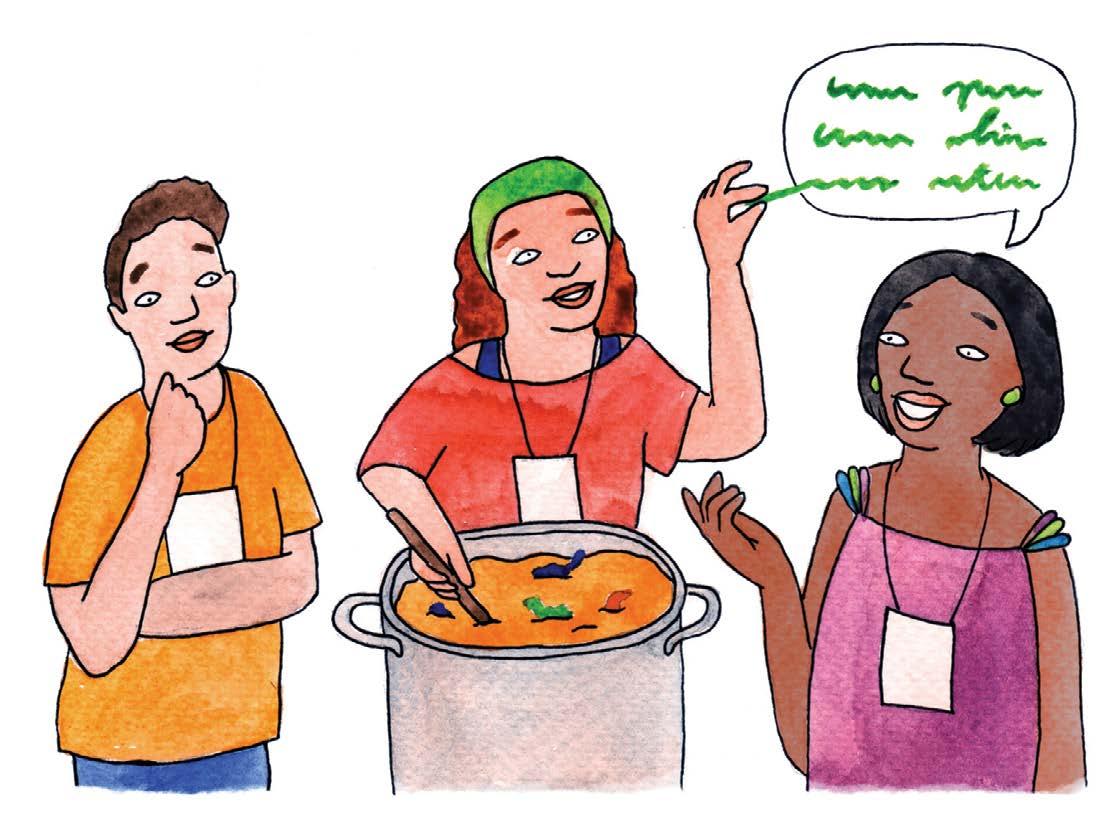
LISTENING: OUR DEEPEST CHALLENGE

Our deepest challenge is around active listening. The Pentecostal evangelical church, though working from a conservative standpoint, have had big successes being there on the ground, listening to the poorest Brazilians and responding to their immediate needs. We can learn from this. The movements, and many people living in the favelas have If we don’t go straight to the said that the leftists and our political parties have stopped people, and if we don’t listen listening to the people, forgetting to connect with them. It was the Abong members and social movements who did and try to reconnect in a way not forget. At the moment, we have the role to be there that is genuinely and humanly helping the communities, to defend themselves against the spiritual, then we will not be able pandemic, because the state is not reaching the people. to change anything. On our side we must show our commitment to human rights beyond just beautiful intentions. If we don’t go straight to the people, and if we don’t listen and try to reconnect in a way that is genuinely and humanly spiritual, then we will not be able to change anything. People in communities have a kind of rationality in the decisions they make because their lives are in danger. Where they are, they have narcotics traffic on one side or the militias on the other, with no state to protect them and the leftists preoccupied in parliament trying to fight for power. When Abong comes together with the movements this is what we need to do to properly connect. To listen. This way we can understand their decisions and where they are coming from. Sometimes our professional arrogance weakens our capacity to see that the answer is there already, implicit in their decisions and actions. This requires a humble position on our part, humanising our relationships and connections with the people. This has been my learning from the pandemic and though I’ve had this insight before, it has never been as deep as it is now. When one listens actively you may be able to see that communities and movements already have their answers and we are only the Abong’s approach and practice is inspiring channel to make it appear, to but remember not to see it as a recipe. What give it voice and significance. have you learned from this to help you to think Sometimes we just have to be through your challenges in your context? together with them, to learn from them and build trust.

How the complex work of coalition-building can succeed
By Sarah Strack, Director of Forus
How do you begin to form a successful global alliance of passionate activists and diverse civil society organisations from all corners of the globe, within a limited timeframe, around an urgent issue like climate change? Having worked for one of the biggest global networks working for climate action, I was quite involved in the lead up to and during the COP 21 Conference taking place in Paris in 2015. COP 21 would be the big moment for us to get the first universal and legally binding deal on climate change through the United Nations Framework Convention on Climate Change. We were anxious. Our governments had been unable to agree during COP 15 in Copenhagen in 2009, a depressing blow to the climate community. Many left their jobs after that and there was much disagreement within the civil society community, with some saying, look, why bother pushing for an international agreement signed by governments, because they’re just not able to deliver. Many other civil society organisations withdrew from that strategy, saying we’re not going to focus on the big policy deals. Instead, we’re going to do work at the grassroots. So, we had a split in the climate community between those who wanted to go for a big policy agreement and those who said we need to do something else. But then little by little, over several years, people started bridging those divides. As we were moving towards COP 21 in Paris in 2015, everyone started to realise that even if we did not have the same theories of change, we needed to get together to find some alignment. It did not have to be an either/or situation. Well over a year ahead of the summit, a number of groups came together to form a diverse coalition, facilitated mainly by local NGOs based in France (the COP 21 hosts). It was called Coalition Climat 21. The push was to start strategising together on how to organise and catalyse the vibrant energies across the climate movement to bring its power to bear and push for the most ambitious, fair and binding agreement possible. But then little by little, and it took several years to get there, people started to work on bridging those divides.
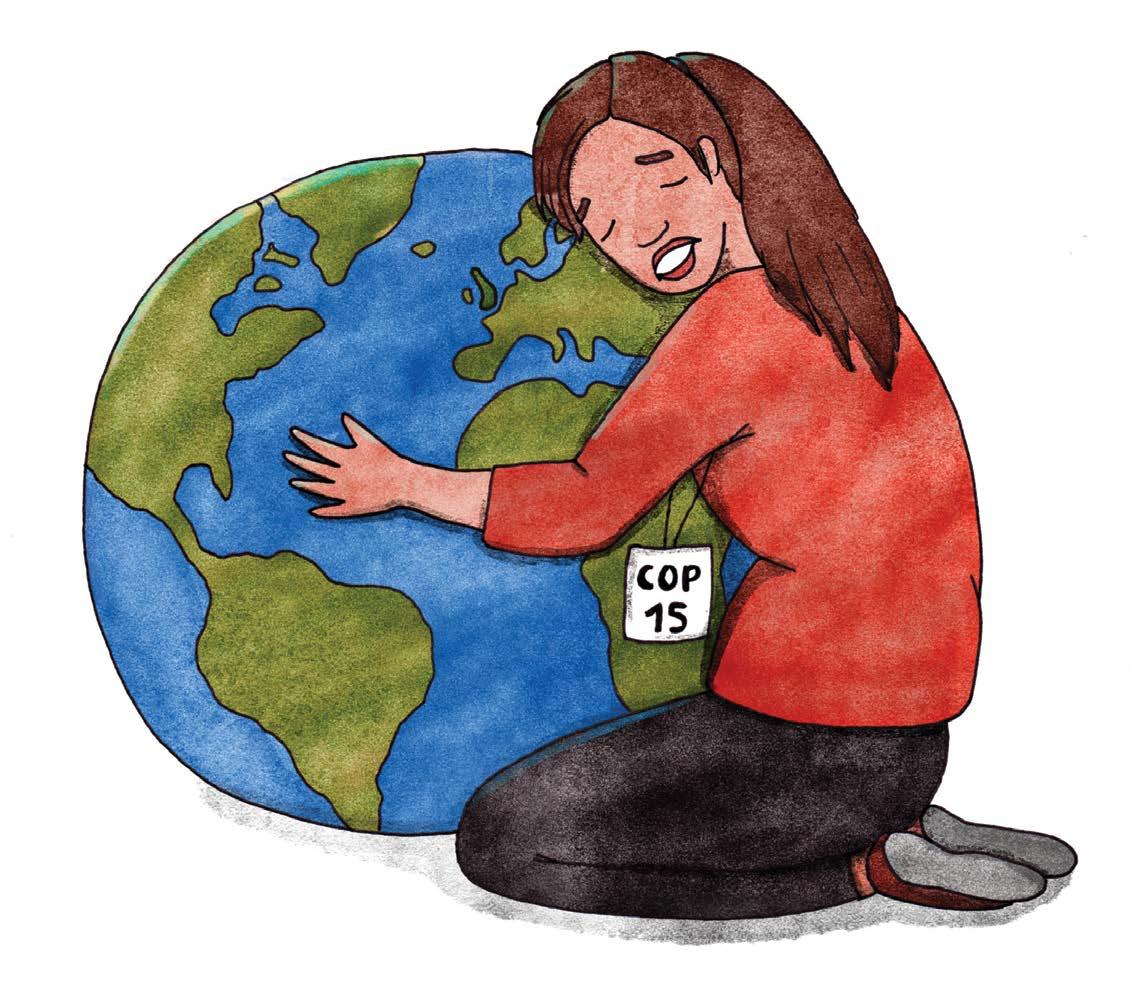
The work of the Coalition was different from that of most broad platforms or networks because the common agenda was more focused, and even though the climate issue is multifaceted we had more of a common base to start with. But even within this common agenda we still had the challenge of aligning the diversity of standpoints and opinions of all the people and the participating organisations. Initially there was mistrust and poor communication between groups on different sides of the spectrum. But through a series of facilitated discussions between the many different actors, Yet the way that all of this was the coalition formed and evolved. organised was surprisingly There were not only climate organisations involved, but trade unions, social movements and many other groups that loose, made possible by skilful in other circumstances would not have had climate as their facilitation, with an emphasis on main focus. It took many, many meetings, sometimes akin listening and trust building. to a traveling circus, but it helped people to slowly learn to trust each other. Now we were all saying we will mobilise in the streets and do the grassroots work, that is important, but we also have to play the inside game of trying to influence decision makers on the policy level. From a communications and advocacy point of view, the work was to develop common narratives, which would have to be very broad, but which we could then all use to reinforce the same messaging in the lead up to COP 21. It was a nervous beginning because the diversity of actors was so broad that I really was not sure whether that would lead to anything. The tactics that people discussed were also very different. But there was so much at stake that all the groups that were involved were able to look beyond their own theories of change and priorities and then find the will and the ways to push towards that same goal. Even those organisations at the forefront of the split after Copenhagen started to collaborate and cooperate again.
WORKING WITH DIVERSITY AND EMERGENCE
The will of all the actors to come together was urgent and strong. You might have expected a major management headache building an effective organisation. Yet the way that all of this was organised was surprisingly loose, made possible by skilful facilitation, with an emphasis on listening and trust building.
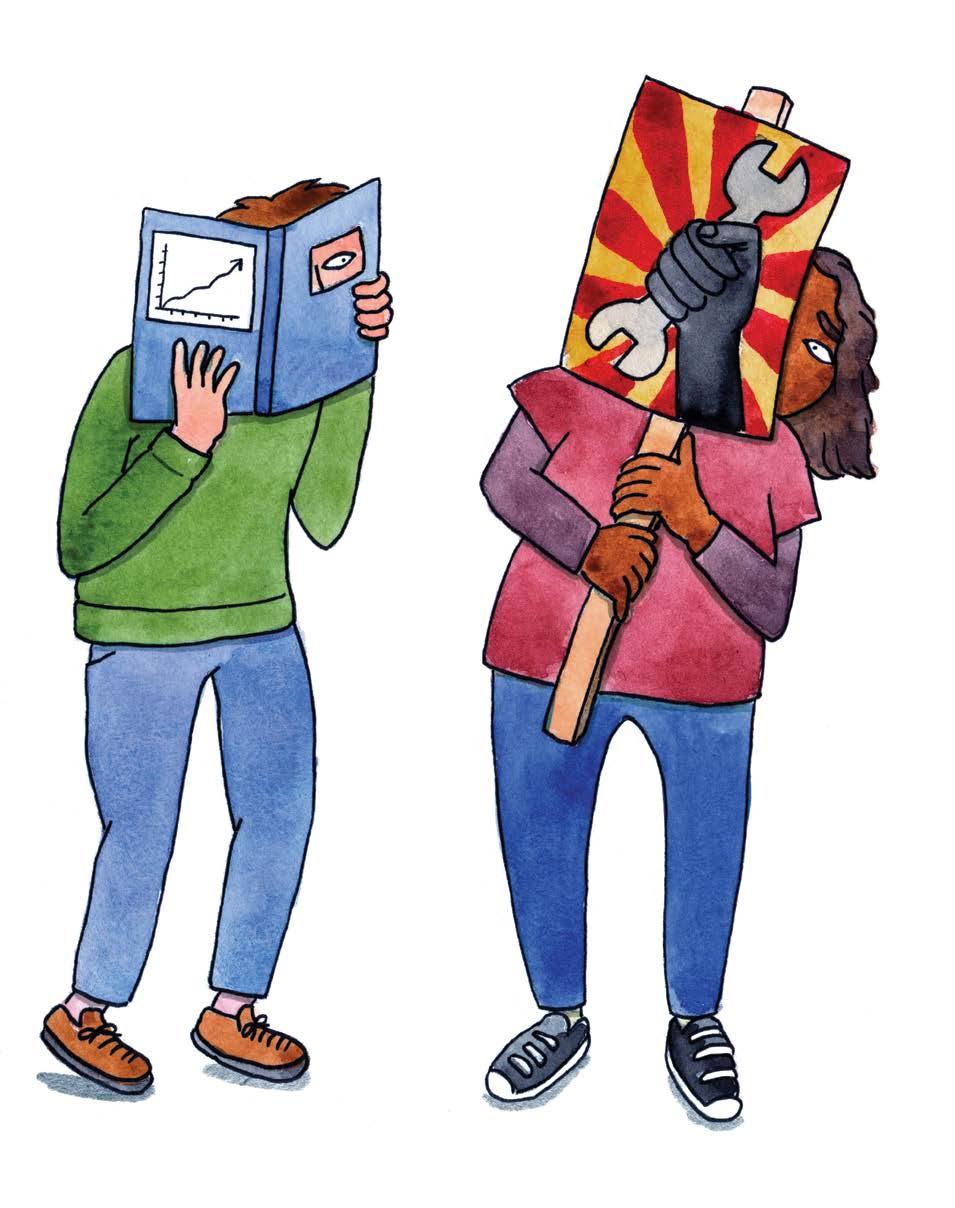
That was what was needed to hold the diversity together, to enable people to grow towards one another and to find their own ways in, to discover the role they had to play. Had it been more “efficiently” organised and managed, rather than facilitated, it is quite possible that this organic emergence may have been stopped and conflict and resistance might have spoiled the process. Instead of a conventional controlling organisation we saw the emergence of selfcontrol and self-organisation. But it was not a straight line to get there! It took a lot of time and many meetings, with people coming in and out and things having to be repeated again and again. But little by little I saw something remarkable emerge out of that, a sense of movement and coherence that I had never experienced. This does not mean that people did not have passionate arguments and debates but there was a real sense that we were working towards a common purpose. I was able to observe those battles and the shifting dynamics over a few years and how, with that common objective, the process was broad enough to accommodate that diversity of theories of change and tactics. And we were all working towards the signpost planted into the horizon of 2015 in Paris. We knew that Paris was not the end of the road; indeed, it was just a milestone to set the world on a better, yet much longer path to tackle the climate emergency. We knew that Paris was not the end of the road; indeed, it was just a milestone to set the world on a better, yet much longer path to tackle the climate emergency.
WHAT REALLY HELPED?
It helped where there was a lot of listening through facilitated exercises. Imagine a multitude of diverse organisations, big, small, global, local, of all kinds trying to find each other. The listening exercises gave the space to everyone to be able to express how they felt about this thing, their fears, their concerns, their expectations, what they would be able to do or not do in their context or on the ground. This built empathy, trust and relationships, without which nothing else would be possible.
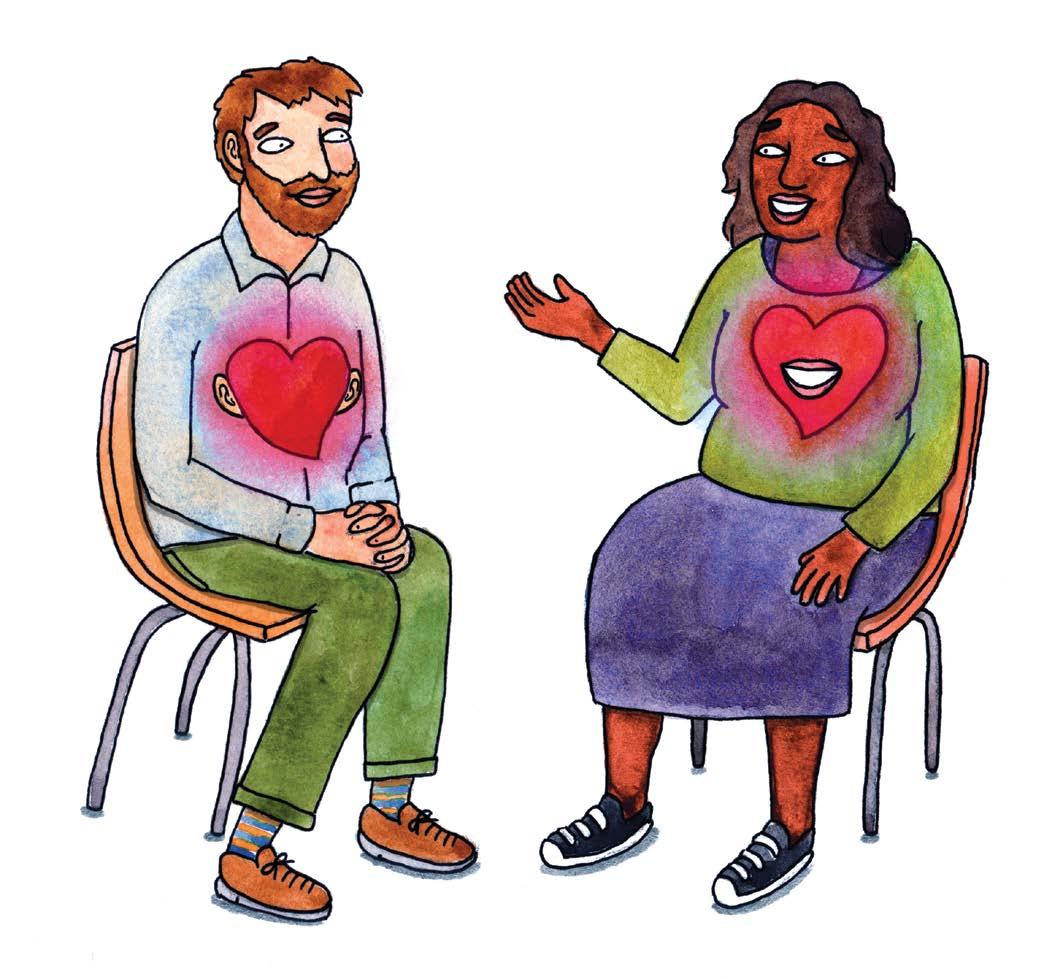
There was a lot of repetition of our objectives and the values which bound us together. With such diversity of organisations and agendas, and being in different places, these objectives and values were expressed and heard in different ways by different people and could easily have become misaligned, with fatal consequences. So, a lot of repetition of those main objectives and what brought us together in terms of our principles and values helped to keep us walking on the same path. Supported by skilled facilitation, there was space for disagreement. Sometimes there were pretty big fights in those discussions. But despite the differences of opinions and strategies there was space to hear them, and they were respected. We had to learn that we could Nothing was prescribed. People were able to opt in or opt not manage what was emerging, but what we could manage was out and do their own activities. And even when we were developing common narratives, they were sufficiently broad so that people could take and adapt them to our own anxieties and controlling whatever resonated with their agendas and constituencies impulses and really learn to and the people they would want to mobilise. trust the people and the process, despite the seeming chaos. We had to learn that we could not manage what was emerging, but what we could manage was our own anxieties and controlling impulses and really learn to trust the people and the process, despite the seeming chaos.

THE “ENGINE ROOM”
Navigating all these dynamics was a handful of dedicated and patient people who helped shepherd the process along. In a way, they were a bit like an “Engine Room”, working with the energy streams in the depths of the system, making sure the communication flow was there, organising meetings, coordinating the different activities, facilitating connections, making sure we had a website, growing and managing the email lists and many other necessary tasks. These technical tasks were obviously important, but they too had to work together in a way that flowed with the emergence of the larger coalition and that also was an action of trust. Trust is not something that magically appears. It takes work both being trusting and proving yourself trustworthy.
Interestingly, through being present and being seen in almost every meeting, the familiar faces gave some human continuity to the process. The coalition was not a structure but a living process, a breathing community of people. The engine room also worked because the different people who were part of it had a clear mandate from their own organisations to dedicate time to do the work. And between themselves in that engine room, there was little hierarchy. Different people could say I can dedicate one day a week to come and focus on documentation or two days a week to come and focus on communication strategies. Obviously, those who had more time to dedicate had a bit more power by virtue of being able to be more active actors in this engine room. But because things were not very formalised and there was a common goal with very horizontal values, this did not translate into power that anyone wielded over anyone else.
DONORS FINDING THEIR OWN TRANSFORMATIVE PRACTICE
This was also a big moment for the donor community and some considerable financial resources flowed to quite a few organisations in the lead up to the Paris Agreement, without which this whole coalition work would have looked quite different. But remember that loose governance structures are problematic for most donors, even though there is more recognition that this is how loose coalitions need to work. There are still hurdles and donors tend to identify particular organisations within the coalition, which they would rather support. But there were ways around this, and it was important that resources flowed to the right place in ways that were not easy to predetermine to enable the functioning of the coalition itself. It is not so easy to convince donors of that because loose governance is not tangible enough for many of them. But processoriented approaches enable you to work with where the energy lies, and so when diverse people and organisations are aligned around a common objective then they can, in diverse ways, mobilise their different energies around this. I really think that this is how civil society can remain agile within itself, not getting stuck on structure which inevitably creates hierarchy and power struggles.
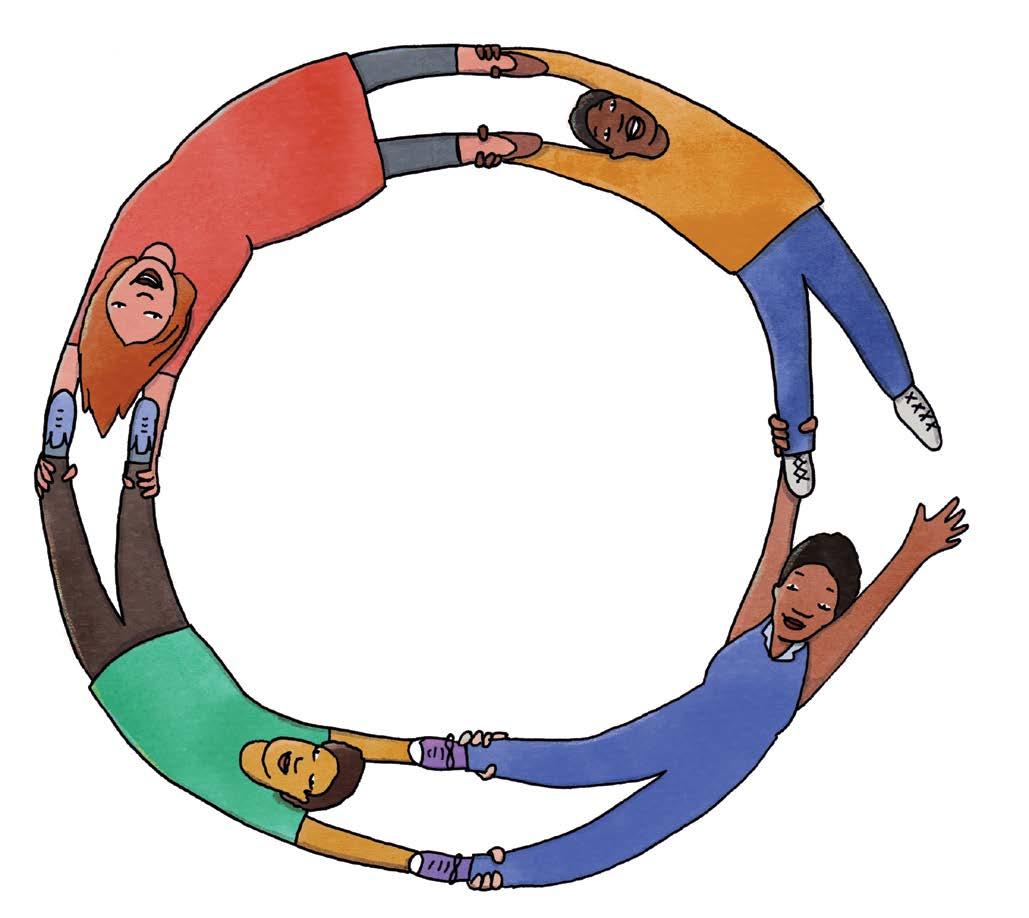
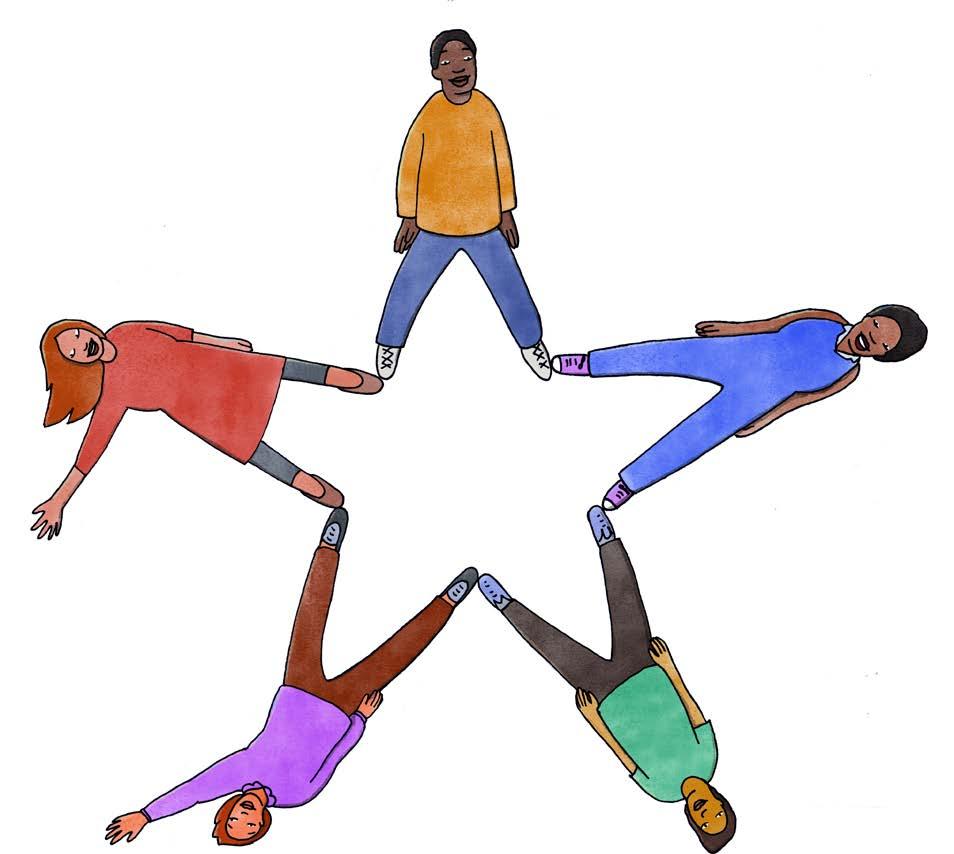
This is so important, because the crises that we are confronting now are coming from many different angles, and we need to be able to transmute or metamorphose into different shapes and forms to be able to respond to these complex emergences, and not to be bogged down in rigid top-down structures and plans. Being agile is about being inwardly diverse to be able to meet and respond strategically to external diversity and complexity. Thankfully, some donors have their own transformative practice and think about how to respond to the different needs and contexts that emerge. In a way this can lead to true accountability, not only to donors, but by all of us, including donors, to the reality of the needs of the process and the time.
POST-PARIS 2015
Even though the process and the outcome were by no means perfect, COP21 was a real achievement for everyone. What happened after the Paris Agreement was also interesting. Many people were burnt out and left the movement or took a break of a few months. And lots of people focused on family or went on maternity leave. But even though we had tried to anticipate it, there was a lot of confusion about what would need to happen next and what would happen to this coalition. Would we all go back into our different corners? Would we need to keep this coalition alive? The coalition did continue but obviously no longer with that strong goal to hold us together. Some discussions continued happening, but not at all as vibrant as they were before. Other organisations withdrew into their own strategic planning processes for at least half a year to figure out their own next steps. The energy that we had before was diminished. But what remained were the personal connections. And that was also interesting, because it enabled people who were in that big coalition to continue to work across the boundaries, and beyond the climate community, with for example trade unions, youth organisations and women’s groups.
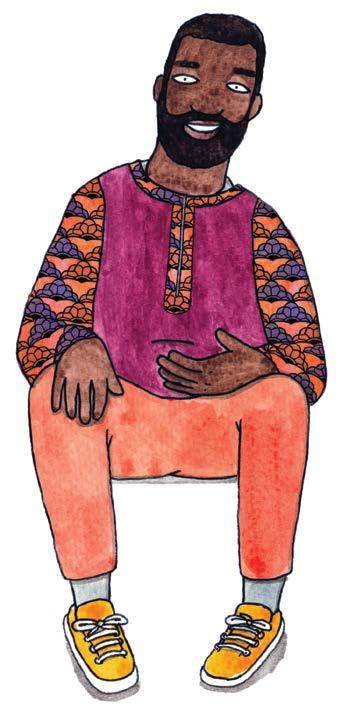
I have a strong feeling that what happened in this story carries vital lessons for not only how civil society needs to converge, but humanity too!
Four Spaces of Collaboration
We need to be mindful of the nature and quality of the spaces in which participatory democracy and collaboration happen, especially between government, civil society and business. “Who is participating in whose process?” is a vital question to ask and resolve to avoid trapping participants in situations that undermine genuine participation. Let us examine the different kinds of spaces that exist:
Closed spaces: This is where important discussions and decisions are made behind closed doors, primarily by government and business. With demands for transparent governance, it is clear that many closed spaces need to be opened up, either to public viewing or to participation in invited spaces.
Invited spaces: Increasingly governments are creating official forums, especially at municipal level, inviting civil society and business to come together to negotiate, plan and to collaborate. If these have statutory power and genuine participation, they can play a powerful role in advancing real democracy. But the typical formal processes of the government-style meetings with controlled agendas can easily bias the process in favour of government and big business interests. In addition, the ability of less powerful players to participate meaningfully in invited spaces may also be shaped by the quality of their own invented spaces.
Invented spaces: These are co-created by citizens to self-organise and formulate extra-state responses to issues, e.g., social movements, campaigns, coalitions, alliances, platforms etc. It is essential for civil society organisations to collectively prepare themselves, to mobilise their diverse, intersectional interests and resources and unify around positions and engagement processes within the invited spaces of government, lest they be divided there and weakened. Yet, the bias of invited spaces may still undermine genuine participation and so we have seen an increasing need and call for more co-created networked spaces.
Networked spaces: This is where actors from government, business and civil society co-design their collaborative spaces to engage and learn together to find novel solutions to specific issues. The successful engagement of civil society here similarly depends on how they prepare in their invented spaces and on the status of the joint plans and decisions made in the networked spaces. Trade unions, whose successful struggles culminate in effective networked spaces through which they have won significant rights and benefits, are good models.
We can see a continuum from closed spaces through invited, invented and networked spaces. Each space makes more visible the power dynamics that exist between the various actors, and thus the chances for accountability and sustainable gains are increased. The quality and effectiveness of invented spaces, i.e., of social movements, campaigns, coalitions, platforms etc., provide the vital preparedness for successful engagement of government and business in both invited and networked spaces.

Adapted from Pamela Masiko-Kambala et al. (2012)
Spain: Future in Common –a liquid forum for moving together
By Maite Serrano Oñate and Clarisa Giamello of Coordinadora de ONGD Spain
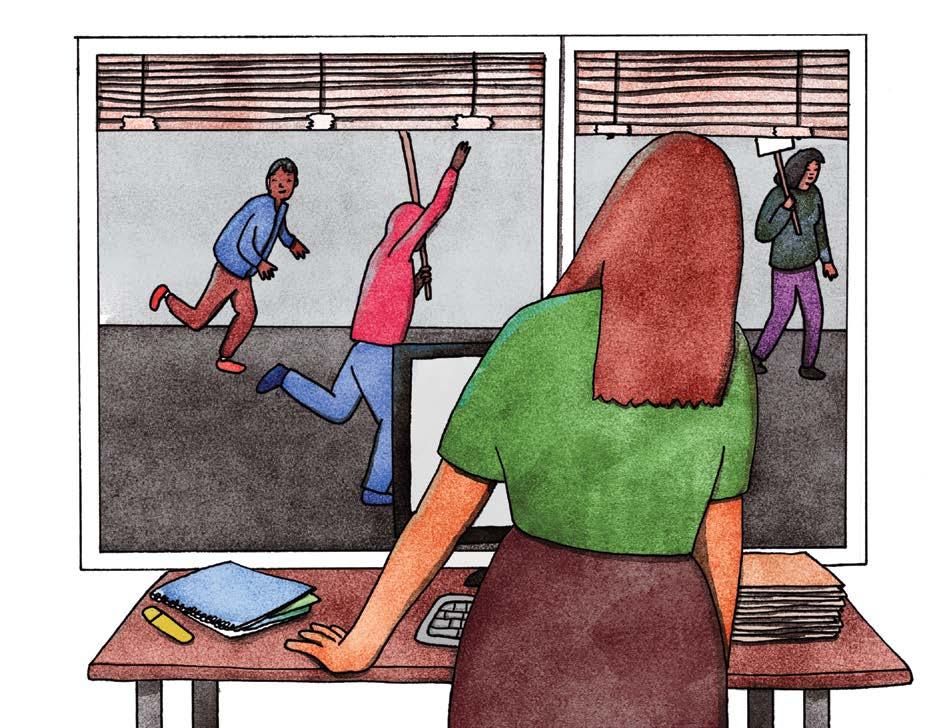
By early 2012 the 2008 financial crisis had already had a tremendous impact on Spanish society. At the beginning of that year hundreds of families were being evicted from their homes each day; hundreds of thousands of people, mostly women, lost their jobs, their houses, their savings; unemployment rose massively among young people and many children started to live below the poverty line.
THE STREETS BURST WITH SOCIAL MOVEMENTS
So, people began to emerge and occupy the streets. Movements and young people converged into the squares of Spanish cities, giving rise to the Movimiento de los indignados (Movement of the Indignant) and the Movimiento 15-M with the aim of promoting participatory democracy against the power of the political establishment, banks and corporations. The Plataforma de Afectados por la Hipoteca (PAH or “Mortgage Victims’ Platform”) managed to place the right to housing as a social problem. “No Somos Delito” (“We are not a crime”) an umbrella organisation formed by more than 70 civil rights associations, social movement groups and NGOs against the gag laws is still fighting against the so called “citizen security law” and others that violate fundamental civil rights such as freedom of expression, assembly and demonstrations. The “White Tide”, supported by thousands of health professionals, was formed in defence of public health; the “Green Tide” did the same to defend education as a public good; and finally, several feminist and environmental movements were emerging, acquiring an importance and social presence unknown until now.
LIFTING THEIR HEADS FROM FUNDED PROJECTS
By the time the NGOs started to lift their heads from their funded Projects, the social movements had already occupied the streets. NGOs soon became overwhelmed by the crisis, with declining public and private funding and reductions. What International Development NGOs had been working with in other countries for decades turned into our local reality with all its rawness. The mirage of opulence fell under its own weight and hit the majority of the population hard, while that small minority obscenely increased their wealth in their midst. For Coordinadora and its members, whose vision is “a sustainable, diverse and poverty-free world, where social justice, equitable distribution of wealth and equal opportunities prevail”, it was impossible not to look around us in shock.
The CEO of one of the largest NGOs in Spain described their situation as that of a juggler who had to spin three plates at the same time. The first plate was to assist the urgent and basic rights for those in need, the second was to handle the imbalance between diminishing NGO resources and increasing needs, and for the Development NGOs the third plate was facing the narrative that emphasised taking care of “our people” vs. those of other countries (as if there was a contradiction!).
A TIME OF CHANGE OR A CHANGE OF THE TIMES?
This was a complex intersection of crises for which our projects were not designed. We were staring into an abyss into which we would fall if we did not change our whole way of seeing the world. How could we, in international cooperation, contribute to that change? For years we had been talking about social movements and change, but we were far away from the social movements emerging in Spain. Inside the Spanish International Development NGO national platform, Coordinadora, we started a reflection process, concluding that; we had to broaden our outlook towards an intersectional perspective, approaching NGOs from other sectors, to be more political, to reach out to ordinary citizens and local organisations. We had some fears about losing our identity as international cooperation actors in the name of the intersectional perspective. At this point, the Board leadership was key. There was a deep conviction that we could not go on doing things the same way and expecting different results. But the problem was that nobody knew what to do next.
The anti-austerity movements in Spain
The 15-M Movement (Movimiento 15-M), the Indignados Movement and many others were a series of protests, demonstrations, and occupations against austerity policies in Spain that began around the local and regional elections of 2011 and 2012. First starting on 15 May 2011, many of the subsequent demonstrations spread through various social networks such as Real Democracy NOW (Democracia Real) and Youth Without a Future (Juventud Sin Futuro). Many called for basic rights, of home, work, culture, health and education. The movement transferred the model of the protest camp to Europe, which had been formed in the Arab Spring, adapting it to a more countercultural framework. This would later expand until influencing the creation of Occupy Wall Street. According to RTVE, the Spanish public broadcasting company, between 6.5 and 8 million Spaniards participated in these events. (adapted from Wikipedia)

We realised that we had to explore, to try, to fail and try again. For this we needed to have a common and open space to talk and work together with others, not only among NGOs but also with other social organisations and movements. We were being challenged by the new social movements and citizen response to the crisis. We discovered that we had lost the ability to connect the work of our organisations with citizen mobilisations and that many of these movements saw us as immobile, passive, even as too installed in the “system”. We decided to strengthen our relations with other organisations from different sectors: environmental, human rights, feminism, social, trade unions. We started to engage them in bilateral meetings first and jointly later, building trust and collectively gathering ideas through sparking new questions and conversations.
THE LIQUID SHAPE OF FUTURE IN COMMON
We did not want to create a new So, this is how we created “Future in Common”, an structure or organisation because informal platform born from a shared idea: “together we are stronger”, born from the need to share agendas, that would become a power identify shared struggles and common elements hierarchy. What we needed was a but also our differences. It brings together more simple meeting space for all the than 50 organisations involved in development, the environment, feminists, trade unionists, academia, organisations, an assembly and childhood, social action and human rights with a loose working groups carried by common agenda to end poverty and inequality and the energy that is there. respect the environmental limits of the planet. We did not want to only be united by common experience of problems and crisis but by a shared ambition about the future we have in common. We saw in the SDG Agenda an opportunity to work from organised civil society on truly transformative intersectoral proposals that break work in silos and allow development problems to be addressed in their entirety. With this ambitious goal, Futuro en Común prepared a parallel report to Spain’s voluntary report at the United Nations High-Level Political Forum in New York. In the same logic, in the context of the pandemic, we prepared a joint proposal of civil society for reconstruction. We did not want to create a new structure or organisation because that would become a power hierarchy. What we needed was a simple meeting space for all the organisations, an assembly and loose working groups carried by the energy that is there.
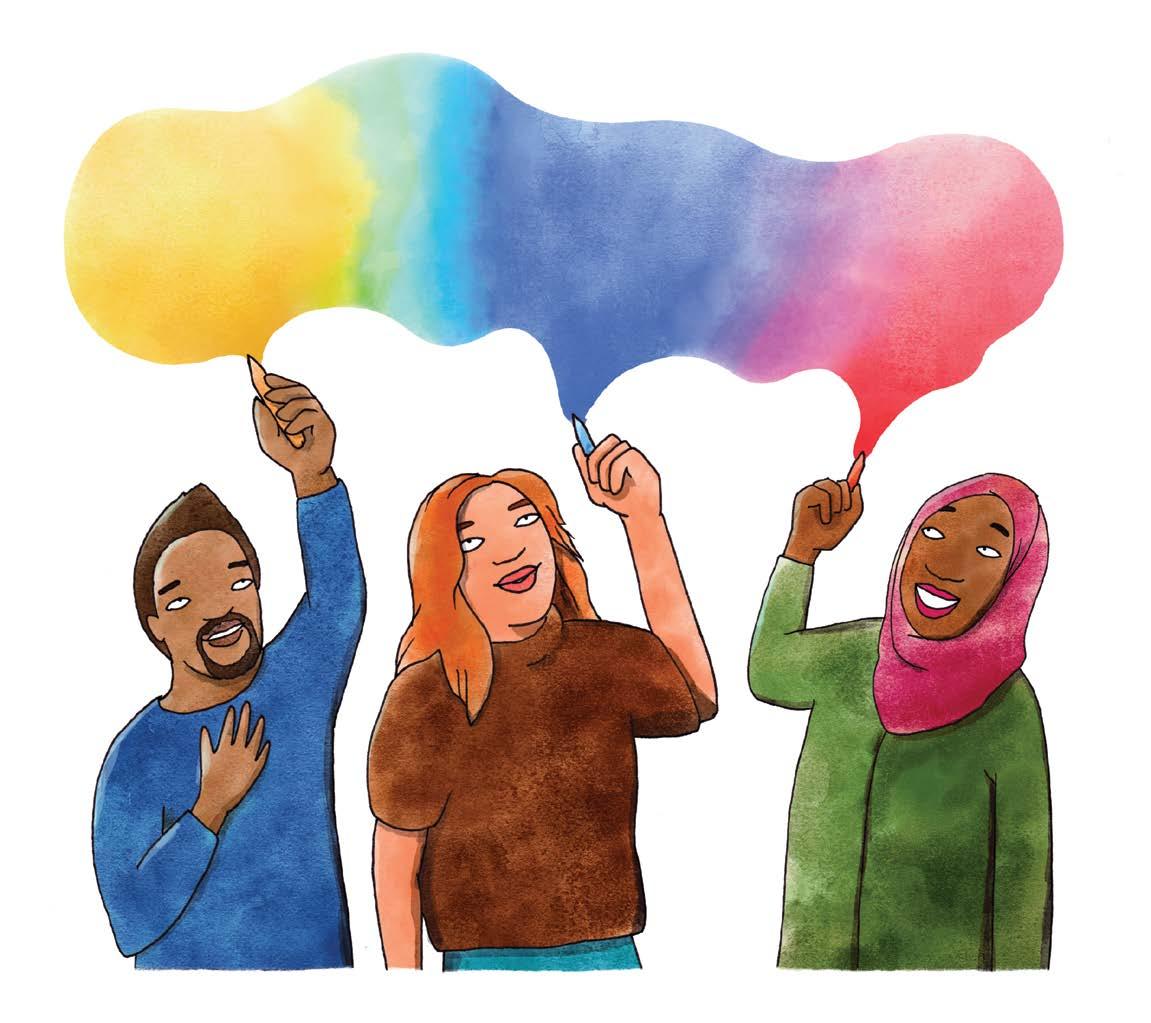
In many ways it is very different to a movement or a platform, more fluid and selforganising. To the outsider it may seem to be too open and loose, but that is how it unlocks real energy and keeps people involved, according to the time and resources they have. For a member sometimes there is intense participation and sometimes they stand back, we keep relationships and possibility open.
SIMPLY NO STRUCTURES
The meeting processes are simple though varied depending on the issues. We have a large, facilitated assembly, and small leading group that oversees the working plans. We have two patient and skilled facilitators who ensure that everyone has a fair space to speak. They are always calm and curious, creating a deep sense that we have to listen to everyone. We can be in the storm of ideas, but after that, everybody has to agree. This builds the sense that we are going together, no matter how fast or slow. Sometimes it is frustrating but at the end there is trust and inclusion. Being diverse, we are able to bring the different perspectives to mingle and influence each other. In that way we can recognise and work with the intersectionality of the issues and the future solutions. Inequality in education is not just an education issue, but a poverty issue and that will increasingly become a climate issue. Fighting inequality in education must be brought from multiple perspectives. For the moment, we do not need a new platform, or some structure. Every sector has structures that already work or try to. We needed a space to try to imagine the world we want, our common future and then start to connect our narratives of change to create that. That is the idea, to connect across issues; how to empower women and how to connect this with environmental issues or with inequality, because if we continue doing the things in separate ways, with separate projects, we will not produce change, just relieve a few symptoms here and there. Even though there is not a formal structure it still requires some funding. So far, the funding was provided by an EU project, voluntary contributions from organisations and the submission of new projects. However, funding these new ways of working remains uncertain. Being diverse, we are able to bring the different perspectives to mingle and influence each other. In that way we can recognise and work with the intersectionality of the issues and the future solutions.
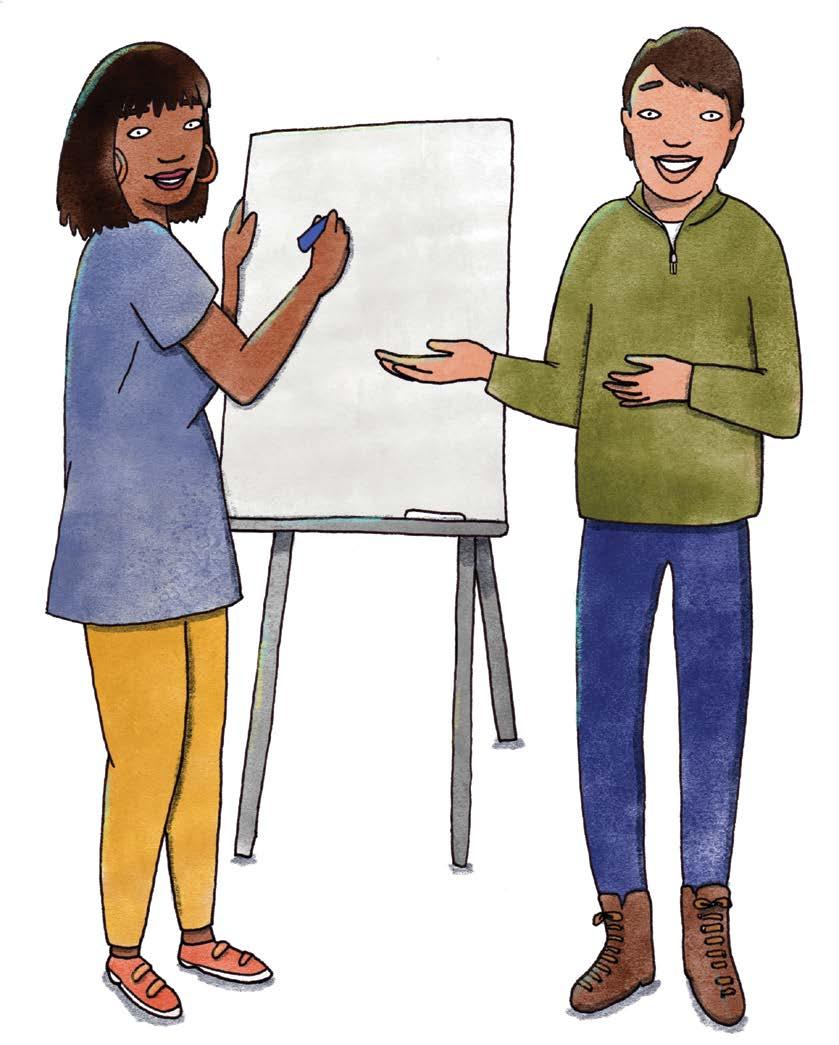
From time to time the assembly decides to reflect on its value, is it still interesting, should we continue or is the moment past? So far it has been a big Yes.
LESSONS LEARNED, CHALLENGES REMAINING
• There is a need to find new ways of working. We need to try again and again, to risk. Maybe we don’t find “the solution”, maybe we do. But what is clear is that if we continue to do things as we have always done following narrow project ways of working, we are not going to succeed. • One of the fears that initially arose when talking about intersectional working is losing one´s organisational/network identity. But the experience was different because surprisingly the intersectional perspectives reinforced and enriched each contributor’s perspective and, thus, each one´s identity. • Even while we try to bring different sectors to work together and develop common messages, the weight of sector driven strategies is still dominant. There is still a long way to go to achieve a true inter-sectorial approach that permeates the agendas of each one. We must continue working to move from the fair position of proposals in each sector to the development of proposals that integrate the different perspectives. • Part of the challenge is to develop more fluid leadership and organisations internally, reducing bureaucracy and promoting deep participation and internal democratisation. This builds the internal faculties for organisations to work across their organisational boundaries, cultivating intersectoral consciousness and capacity. • Among the pending challenges is working closely with social movements. To achieve this a cultural shift is needed to help bring a better understanding of each other: language, timetables, ways of working etc. Besides, donors need to be helped to find approaches that comply with reality to help the collective interaction and learning process. Failure is good for learning! • There is a need to improve methodologies and facilitation skills to deepen dialogue among different actors, to be able to find what unites us, and to deal with those issues in which it is difficult to find a common position. • Governance of these flexible, open structures is also an issue to improve. A generative and collective leadership is needed, This builds the internal faculties and a generosity from the participating organisations to for organisations to work across their organisational boundaries, offer both economic support and leadership support. Resources are always a problem. In these open and flexible initiatives, we have combined three different finance cultivating intersectoral sources: contributions from the organisations; consciousness and capacity. organisations paying directly some of the costs and grants held by one organisation that is offered to the initiative.
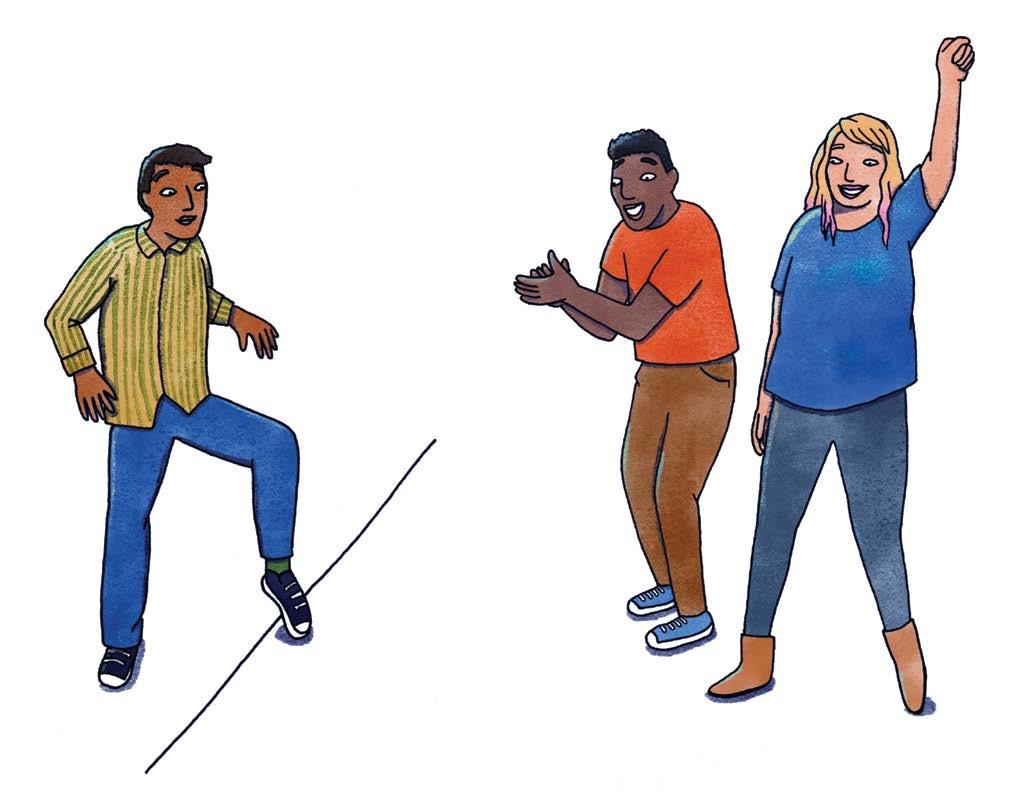
How to be a Social Movement Ally
In an article “Can NGOs and social movements be authentic allies?” by Michael Silberman (2020) the author contends that campaigning organisations are moving beyond the question of “if” they should engage with movements to asking “when” and “how” - reflecting an understanding of systems change as complex, nonlinear and unpredictable in which NGOs can have little impact on their own. Many NGO staff rightly have an overwhelming fear of causing harm to movements by acting in ways that are (or appear to be) self-serving or co-opting. That said, inaction during a “movement moment” also risks an organisation’s relevance and impact. He provides a few lessons to others pondering the question: • Be clear on what you mean by movements. The author speaks of a worrying trend of NGOs speaking of “movement building.” These semantics matter because getting clear on what we mean by movements enables us to have more productive conversations within our organisations and honours the time and painstaking work of true movement builders who don’t enjoy the same resources as NGOs.
• Know when to leave your brand behind. Most NGO colleagues harbour fears about their organisation’s brand if they engage with or support a movement.
Movement support work introduces new types of risks which shouldn’t be treated in the same way as others. Factoring in the long-term value of systems change into analyses of organisational risks will pay off for everyone. • Share your credibility. Most advocacy organisations have spent years developing their communications and media machines, which can be invaluable in amplifying movement messages, demonstrating solidarity, and helping to shift societal narratives and culture.
• Move money and resources. Movements are under-resourced. The author suggests the sharing of resources such as meeting rooms, communications, and printing etc. which, though small, can make an enormous difference. There are many examples of the collaborative field between NGOs and social movements. Several wellknown organisations see this as an important feature of their strategy towards achieving goals.
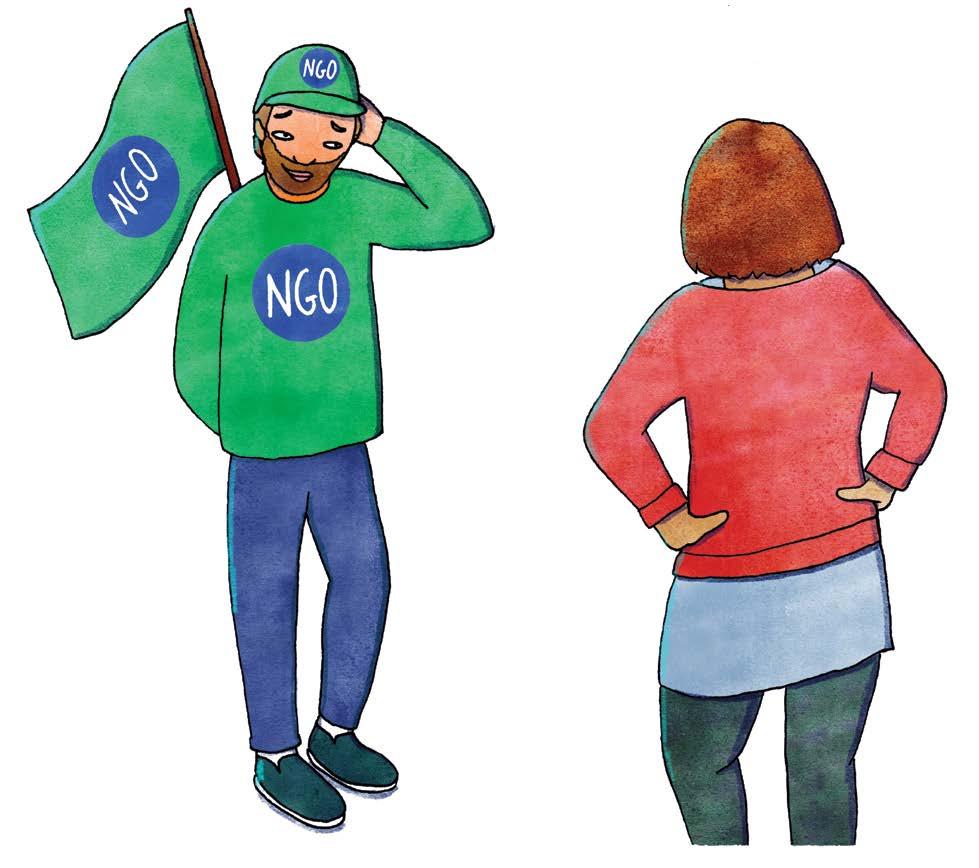


Networks and coalitions can be powerful forces for change, especially when they mobilise the diversity of the members and voices that we have in civil society. Since the beginning of the Covid-19 pandemic, we have seen how often civil society is closest to the needs of communities. And even though networks sometimes seem to be somewhat removed from the reality on the ground they help us to have a view from the balcony, to aggregate all these different needs and perspectives. Many of the organisations participating in platforms or coalitions, do so as an add-on to their day-to-day work. It is a challenge for them to engage in the long term or consistently. We must not see this as a problem but as part of the territory. We have to unlearn mechanistic and controlling impulses and anxieties and learn a more trusting and facilitative way of mobilising whatever “pieces” of energy and capacity there are available. So, we experience fluctuations of involvement in member organisations, except for those organisations or networks who have dedicated capacity for the network and coalition building. It takes time for members to realise the need to commit more to collaboration. Members commit energy depending on how the agenda or the activities of the network align with their own priorities and how it adds value to what they are already doing. But the messiness of collaborative work and the difficulty of “measuring” added value makes this challenging and requires an act of faith that the risk is worthwhile. The issues themselves may have fluctuations and rhythms, building up to crescendos like COP21 and then waning as we take time to breathe out, reflect and build ourselves for the next wave of work. So, one of the first challenges for networks and coalitions is to navigate those fluctuations. We need regular feedback conversations with members and allies to renew our alignment in time, space and priorities, as a continuously responsive approach.
As the world seems to fragment, disintegrate and unravel so our countermovement is to turn to each other, to gather together, to integrate and to remake the connections between ourselves, enabling our collective energies to be mobilised, held and released coherently as a force of social change.






